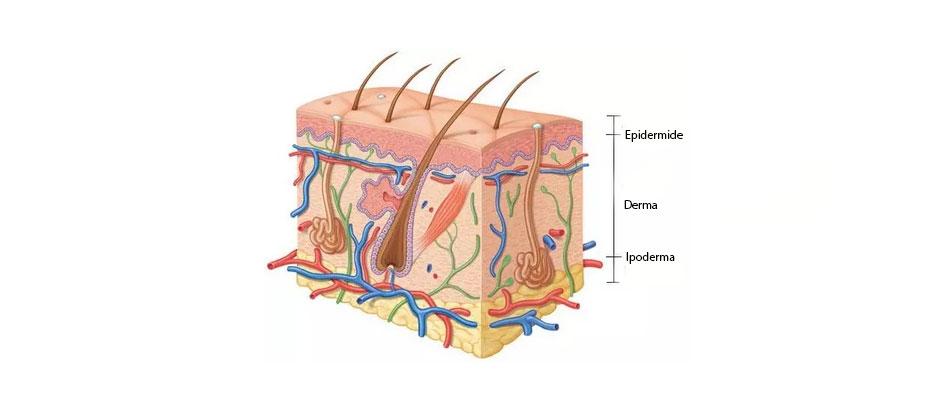Epidermis is the outermost layer of the skin. Its function is to cover and protect the other organs of the body.
The epidermis is completely renewed through a process of proliferation and differentiation that continuously brings new cells generated in the deeper layer to migrate and transform through the overlying layers to be dispersed by desquamation. On the surface of the epidermis (and therefore on the skin) there is a thin film made up of lipids, fats and sweat: the hydro-lipid film. This strengthens the action of the epidermis - fighting against bacteria - and prevents it from drying out. It is at this skin level that the active hydrants and nutrients act.
The Dermis is the skin layer underlying the epidermis, consisting of connective tissue, richly vascularized and innervated. It connects to the epidermis through the dermoepidermal junction which guarantees, with the high number of anchoring filaments, a secure bond between the two layers. The dermis, moreover, gives the skin the characteristics of consistency and strength, thanks to the abundant collagen fibers, and is a very elastic layer, which also resists strong traction, but not to cut. Unlike the epidermis, it is vascularized.
The Ipoderma is composed of: adipose cells (adipocytes), special collagen fibers, connective tissue, blood vessels
